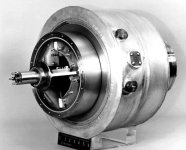I don't have much to add to this except to relay my experiences as a Japanese motorcycle technician for 25 years
As mentioned earlier, most motorcycle engines have the A.C. generator running in the engine/transmission oil and charging systems have always been the Achilles heel of the otherwise, generally reliable Nipponese power-plants. Charging system failures were particularly chronic in a long running model line, the Suzuki GS series of transverse mounted, in-line 4 cylinder motorcycles of the late '70's and '80', but were common in all the UJM's[Universial Japanese Motorcycle]of the period. The components that failed were quite regular and predictable and the trouble-shooting procedure simple.
Once the battery was established to be sound and having a full charge, a "drain" test was performed. With the ign. switch off, a multi-meter[set to Volts DC] was placed in series with one of the battery leads with the expectation of a reading of zero[no-drain]. But rectifier problems were common, accounting for more than 50 % of charging system failures. Readings in multiples of three, 4.5V, 9V or 13.5V represent the number of failed diodes used in 3-phase A.C. rectification. Rectifier/regulator assemblies are non-repairable[hermetically sealed, for our protection

]. I'm sure repairing these units would be "small potatoes for the Gurus here, except that the insides of the module was tightly packed with some sort of gel that had dried into concrete hardness, making it not worth the trouble.
The second phase of trouble-shooting consisted of checking D.C. output. Most service manuals and the manufacturers would have the tech. reading current, but in my four plus decades of working as a mechanic, I have never gone to the bother. I simply place a quality analog meter across the battery an look for a needle deflection of 1 to 2 volts above the battery's full SOC[13.8V, more or less, for a 12 V system]as the engine is reved up. No D.C. output-on to the next step.
At this point, the manufacturers would have the tech. looking at the A.C. output at the stator windings, but I seldom did this. I simply started checking continuity, one of the three stator output wires to ground. Inevitably, one of the windings was shunted, "cooked", we would say.
I really don't have any epiphany-type conclusions to draw from this tale, except to state the obvious. There did seem to be a correlation to the "freshness" of the oil and the stator failure rate. "Cooked" oil equates to "cooked" stator.
Another common failure on motorcycle engines is a leaking counter-shaft sprocket seal, allowing engine oil to migrate over the drive chain and sprockets. Not necessarily a bad thing for the lazy rider, it became an automatic chain oiler.
Which brings me to the point of this rather long, rambling post.
Why not place the vent hole in a strategic location behind the gear cluster and let it vent.
And I though my days of an oily right pant's leg was over




